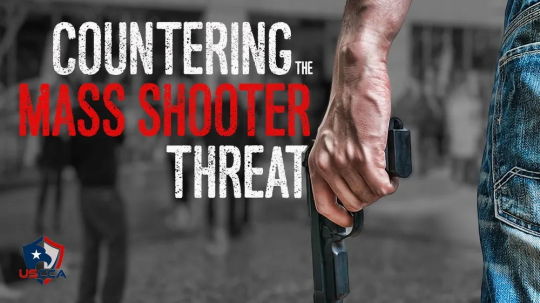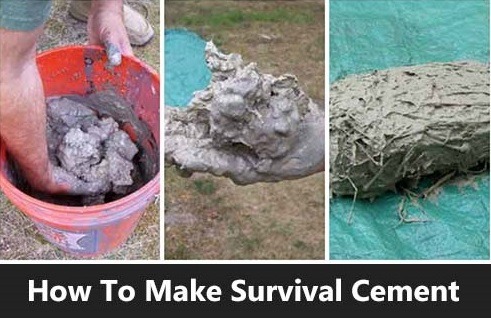Text
Crossbows for Hunting and Defense:
Types of Crossbows: 10 Picks for Enhanced Hunting (countrycrossbow.com)
[14-Point Emergency Preps Checklist]
[11-Cs Basic Emergency Kit]
[Learn to be More Self-Sufficient]
[The Ultimate Preparation]
[5six7 Menu]

More and more women of all ages are getting into crossbows. Some are getting them for hunting. Some for target shooting. Some, due to gun laws in their home states or other personal reasons, are getting them for home defense. What ever the reason it is great to see more women embracing the crossbow.
#survival#preparedness#prepping#self sufficiency#hunting#crossbow#security#safety#defense#self defense#prepper#prepare4tomorrow#survivalism#survivalist
17 notes
·
View notes
Text
Protest vs Riot


Under the First Amendment to the U.S. Constitution, every American has the right to protest. It falls under the right to free assembly.
"Congress shall make no law respecting an establishment of religion, or prohibiting the free exercise thereof; or abridging the freedom of speech, or of the press; or the right of the people peaceably to assemble, and to petition the Government for a redress of grievances."
A protest becomes a riot when one or more people in a group engage in criminal activity involving the destruction of the property of others and/or injuring or killing others. It is counterproductive to the ultimate purpose(s) of protesting. In 2020, some media commentators tried to blur the line between "protest" and "riot" rather than properly interpret the First Amendment's phrase "peaceably to assemble".
Free Speech vs Hate Speech: Basically, the Supreme Court says speech becomes a crime when it leads directly to a hate crime. The speaker must incite immediate violence or make clear threats of violence targeting a specific person or group. Or, the speech must lead to a hate crime; a criminal offense motivated by bias. A statement like "death to [person or group]" could cross the line from peaceful to violence.
Civil Disobedience is the active, professed refusal of a citizen to obey certain laws, demands, orders or commands of a government. By some definitions, civil disobedience HAS to be nonviolent to be called 'civil'. Hence, civil disobedience is sometimes equated with peaceful protests or nonviolent resistance.
When government has overreached their authority and powers that The People have established, plan or participate in legal peaceful protests and civil disobedience demonstrations. Just as radical groups (rioters) harass, harm and destroy, peaceful protesters must not be silent to communicate their cause.
How to Hold a Legal and Meaningful Protest: To peacefully protest, identify your expectations from a civil disobedience action; government reform, smaller government, reduced government spending, overreach, etc.
[Reference Link]
Related Resources:
Protest vs Riot [Link 2]
Staying Safe in a Crowd or Riot
Protest Something That Actually Matters
[14-Point Emergency Preps Checklist]
[11-Cs Basic Emergency Kit]
[Learn to be More Self-Sufficient]
[The Ultimate Preparation]
[5six7 Menu]
#prepare4tomorrow#prepper#prepping#survival#shtf#survivalist#survivalism#riot vs protest#protest vs riot#civil unrest#hate speech#peaceful protest#free speech
0 notes
Text
The Lone Wolf Prepper: Foolish or Prudent

I've briefly touched on this topic in other blog posts but never hit it head on. Why now? I recently, and without warning, lost my "prepper buddy". I have not dealt very well with his death. We spent much time together in person and on the phone. I truly trusted him to have my back. Now, I feel, I will never find another that I will trust as much as I trusted him.
For me, there is nothing casual about earning my trust or proving my trustworthiness. These are exercises to me. I'm intentional in what I do to prove I am trustworthy and the trustworthiness of others to me. So, when my friend passed away, I lost, not only one of my dearest friends, but a lot of time and effort establishing our mutual trustworthiness.
I'm sure some psychiatrist/psychologist would have a field day with my psyche but, quite honestly, I am quite content being alone. It is rare that I ask for help and I would rather do it myself and, sometimes, risk serious injury, than have someone hover around me giving their opinion of how it should be done and exposing my real [ugly] self of how I handle stress.
Honestly, I would prefer companionship over solitude but my personality doesn't work for most people and finding that exceptional soul exhausts me. My lone wolf persona is not macho or cool, it's just convenient. But one day, it will bite me in the ass.
Ecclesiastes 4:12 reads "Though one may be overpowered, two can defend themselves. A cord of three strands is not quickly broken." This verse extols the virtues of having a partner and to be alone in life is always a more precarious proposition than having friends. People who travel alone are much more vulnerable.
Bottom line; avoid the "lone wolf" mindset. Work [hard] at finding that rare gem (exceptional soul) that knows everything about you and still loves you. My friend used to say "you can't get rid of me that easy". That is a rare, and valued, friend. But, if you insist on being the lone wolf, you better learn to be very, very "bad ass" or stealthy or your crisis survival days will be short-lived.
Related Resources:
The Lone Wolf Prepper
Staying Safe Together
[14-Point Emergency Preps Checklist]
[11-Cs Basic Emergency Kit]
[Learn to be More Self-Sufficient]
[The Ultimate Preparation]
[5six7 Menu]
#lone wolf#prepare4tomorrow#prepper#survival#survivalist#survivalism#buddy#companionship#solitary#shtf#survival companions#diy#alone#stealth survival#bad ass survival#prepping
1 note
·
View note
Text
Personal Information Security: Destroying Unwanted Documents for Privacy

Shredders offer some peace of mind in a world of burgeoning identity theft. But since many documents are available in digital form these days are shredders still a vital tool, especially for the home? YES!
Things To Consider Before Buying a Paper Shredder Machine
Purpose (paper, credit cards, cardboard, CDs, DVDs, etc.)
Storage Capacity
Cutting Type (Strip, Cross, Micro)
Speed and Power
Jam Resistance and Clearing
Status Checking (alerting, visual)
Additional Special Features
Shredder Types (Strip, Cross-Cut, Micro-Cut/Confetti) [Video]
Paper Shredders May Not be as Secure as You Think
The following links identify other methods of destroying sensitive paper and digital documents:
Shredding or Burning Sensitive Documents?
Methods to Destroy Sensitive Paper and Digital Documents
Destroying Documents Without Fire or a Paper Shredder
Make Fire Bricks From [Shredded] Trash Paper
Related Resources:
Life-In-A-Box: Storing Important and Legal Documents
What NOT to Share on Social Media
Staying Below Government Radar
Keep Your Personal Information Top Secret
How to Protect Against Identity Theft and Respond if it Happens
Internet Safety for Children
[14-Point Emergency Preps Checklist]
[11-Cs Basic Emergency Kit]
[Learn to be More Self-Sufficient]
[The Ultimate Preparation]
[5six7 Menu]
#prepare4tomorrow#prepping#prepper#safety#security#survival#survivalism#survivalist#shredding documents#document shredding#document security#personal information security#identity theft
0 notes
Text
Preparation to Stop a Mass Shooter

These days, armed citizens have a lot of options for firearms training. One question arising frequently asks, "with so many choices, where should we focus our time and money?" Some say, develop close quarter fighting skills to fend off an up close and personal assault; others note that, with terrorism now occurring on U.S. soil, we need greater accuracy for smaller targets at longer distances. Armed citizens aren’t sure how to prioritize.
Don’t train for the average, train for the anomaly. Any competent self-defense practitioner should be able to engage and hit human-sized targets at 50 yards while on the move. Now we are seeing many, many, many instances where shots [during mass shootings] need to be taken at 10, 20 or 25 yards and even more.
Interviewer: Just last year, at your training business, you introduced a class to hone skills that may be needed if one is caught up in a mass shooting event. Arguably, a mass shooting event is much less likely than being targeted for a home invasion, car jacking, robbery or sexual assault, to name only a few. Why this focus?
Interviewee: At the Academy, we have a saying: We don’t train for the average, we train for the anomaly.
Staff Sergeant Andy Brown, USAF, Ret., is the Fairchild Air Force Base Security patrolman who, back in 1994, interdicted and killed the mentally deranged shooter at Fairchild Air Force Base. This individual, a former airman himself, had been discharged, then came back and took out his hatred on the psychological and medical staff at the hospital.
Well, Andy had to interdict that individual with his Beretta M9 [handgun] and the investigation shows that he shot that individual from 70 yards away. Well, that is the anomaly, but that is what we train for here at The Firearms Academy of Seattle. We want our students to be able to handle just about anything that life gives them–whether it is an easy five-yard affair where they have to shoot someone a couple of times and the person falls down or whether it’s an active killer 79 yards away.
Read the remainder of the interview at this [Reference] Link
Related Resources:
How to Survive an Active Shooting Encounter
Psychology of a Self-Defense Shooting
Fight/Shoot Until the Threat Stops
Basic Firearms Training
Self-Defense Insurance
What is ACLDN?
[14-Point Emergency Preps Checklist]
[11-Cs Basic Emergency Kit]
[Learn to be More Self-Sufficient]
[The Ultimate Preparation]
[5six7 Menu]
#mass shooter#prepper#survival#prepare4tomorrow#active shooter#terrorist#terrorism#prepping#survivalism#survivalist#shtf
0 notes
Link

With summer, vacations usually follow. And with vacations, criminals usually follow. Have fun but don't ignore safety.
Even during seemingly harmless situations, travelers need to be, what security professionals describe as, "situationally aware." It's the foundation of personal security. It extends to every minute you're away from home -- whether walking down a street, riding a bus or shopping in a crowded market. Predators look like us and act like us but they are, actually, looking for their next victim.
[Reference Link]
Related Resources:
Hiding Valuables While Traveling [Link 2] [Link 3] [Video]
Guide to Personal Safety and Security
Smart Traveler Enrollment Program for International Travel Safety
[14-Point Emergency Preps Checklist]
[11-Cs Basic Emergency Kit]
[Learn to be More Self-Sufficient]
[The Ultimate Preparation]
[5six7 Menu]
#Prepare4Tomorrow#prepper#survival#travelSafety#securityTravel#safeTravels#safety#security#prepping#survivalist#survivalism#travel safety#vacations
0 notes
Link

My grandparents didn’t have air conditioning and my parents didn't have it until I was 14. So, how did we stay cool during the Summer? Here are some basic things to consider when the temperatures and humidity increase to uncomfortable levels.
Stay informed of the weather forecast. Before a warm front approaches, make preparations for these quick "cool ideas":
Stay hydrated: Drink plenty of water
Avoid or limit the intake of caffeinated and alcoholic drinks which cause dehydration
Limit OUTside physical activities to early morning & evening (before 11am or after 6pm) - do INside projects in the meantime
Schedule OUTside projects that are located in the shade at various times of day (Shade Schedule)
Apply damp, cool cloths or ice to the body pulse points where the blood runs close to the skin (head, back and front of neck, stomach, forehead, temples, wrists, lower back, backs of knees, inner thigh, fronts of elbows, or upper chest)
Wear wet clothing or clothing placed in the freezer or refrigerator
Run a window box fan (blowing outside) with one open window located in a cooler area of the house [cross-ventilation]
Run a ceiling fan rotating counter-clockwise
Run a floor fan angled slighly upward (because cool air sinks)
Use a hand-fan but some say the physical body movement may make you warmer
Use a fan to blow across a bowl of ice or through a damp towel (refer to "swamp cooler" below)
Use bathroom and kitchen exhaust fans to draw out the heat from nearby rooms
Soak feet in a pan of cool water
Take an occasional cool shower, dip in a pool, pond, lake, stream, river or ocean or spray with a hose or spray bottle
Seek shade often and avoid direct sunlight
Wear natural fiber (cotton), lightweight, light-colored, loose-fitting clothing and headcover (wide-brim hat to keep sun off scalp, face, neck)
Women - wear skirts instead of pants and non-padded bra
Avoid wearing a backpack to carry things. Consider using a shoulder bag or bag with handles.
Limit your intake of food types (fat & protein) - Consume fruits, veggies, spicy foods & astringent (mouth-puckering) food & wines
Consume refrigerated or frozen foods
Some medications can raise body temperature. Research your prescription & off-the-shelf medications for this possible side effect
Take an occasional trip to air-conditioned public places like the mall, store, library, movies, car or bus to hang out in a cool place for a while
Don't be offended by Sweat/Perspiration to get the skin's natural evaporative cooling effect
Avoid cooking, cook outside, use a slow cooker to minimize ambient heat or cook meals ahead of time
Close windows & blinds/curtains (room-darkening and/or reflective) during the heat of the day & direct sunlight - open after the sun goes down
Use awnings or other external window shading that lets light through but blocks direct sun heat
When the sun goes down opening windows at both ends of the house, for cross-ventilation, to let air move freely throughout the whole structure
Avoid using heat-generating appliances like a hair dryer, stove/oven, clothes dryer (hang laundry outside, in the AM, to dry)
Unplug any appliances that still use electric even when not in use (read Killing My Electrical Vampires)
Use natural light or minimize the use of, or replace (with LEDs), hot incandescent light bulbs
Keep cooler areas of the house closed off from warmer areas - shut doors
Retreat to cooler areas in the house (basement) or well-shaded, breezy areas outside
Put smooth white fabric covers on your furniture to reflect heat and light
At night, place an icepack in the bed or under the pillow
Sleeping in a Hanging Hammock, indoors or out, provides air circulation around the body. Because hot air rises, hang as low as possible.
Use breathable bed sheets (cotton or bamboo) that keep you cool while sleeping
If living in a motor vehicle (RV, etc.) park near water (lake, ocean) & in shaded areas, use sun shades on windows & 12v fan when AC isn't running
Know the symptoms of, and treatment for, Heat Stroke
Don't forget plans and provisions for the pets and livestock - they get hot too
Consider addressing these other factors which may cause additional discomfort during hot & humid conditions:
Humidity - Lowering the humidity will help you feel cooler. Run a dehumidifier.
Allergies - Stock up on allergy medications or products to reduce in-home allergens like air filters & pollen-reducing window screen material
Insects are annoying - apply Insect Repellent to clothing (including hat) when outdoors - apply methods to prevent them from entering the home (porch screen) or dispose of them if they do (inside bug-zapper or hanging glue traps). Consider wearing bug clothing to allow air in a keep bugs away from the body.
Physical or Medical Conditions that may be exacerbated by high heat or humidity
Direct Sunlight on Exposed Skin - is harmful & may be uncomfortable. Cover all exposed skin with light weight/colored clothing. Absorbed sweat on clothing can give an evaporative (wicking) cooling effect.
Other Considerations:
Invest in better windows, doors and insulation
Install a Cool Roof - Cheapest method is to paint a light color
Install a Green Roof
Strategically Plant Trees for Shade - Keep Trimmed to Prevent Property Damage
Install Awnings and Solar Screens to Shade a House - Be Careful of High Winds
Use Fans to Move Cool Air From Window AC to Other parts of the House
17 Ways to Keep Your House Cool and Save Money
Keeping Your Cool – When There's No Air Conditioning
Stay Cool with a Misting Fan
Zero-Electricity Air Cooler From Plastic Bottles
Emergency DIY "Air Conditioner" Search Results [Video - Fan & Ice] [Video - Fan & Wet Towel]
No-Ice Swamp Cooler* (did not work well for me but you may have a better design) [Site 1] [Site 2] [Building Instructions] [YouTube Videos]
* For DIY Swamp Coolers, use wicking filter material (example), used in humidfiers, to avoid having to pump water to the top of the cooler.
[Reference Link]
PRODUCTS:
Evaporation Cooling Products
Related Resources:
Off-Grid Solar Air Conditioning
Off-Grid Refrigeration
[14-Point Emergency Preps Checklist]
[11-Cs Basic Emergency Kit]
[Learn to be More Self-Sufficient]
[The Ultimate Preparation]
[5six7 Menu]
This blog is partially funded by Affiliate Program Links and Private Donations. Thank you for your support.
#Prepare4Tomorrow#airConditioning#prepper#Survival#shtf#summer#air conditioning off grid#off grid air conditioning#staying cool#prepping#survivalist#survivalism#summer cooling
0 notes
Text
Practice [Street] Awareness

Rarely does life-threatening danger just come “out of the blue.” More often, simple problems escalate into dangers. Many have had the experience of being surprised by someone on the street and wondered afterwards how they got that close without being noticed. So the benefits of observing possible threats and staying out of range cannot be overstated.
Sharpen your Senses on Situational Awareness and Pre-Attack Indicators.
Take your head out of your SmartPhone and "Buds" out of your ears and pay attention to, and assess, the sights, activities and sounds around you.
As you travel, visualize where you can escape to, or use for defense, if something happens that very second.
[Reference Link]
Related Resources:
Street Survival Skills [Link 2]
Stalker and Surveillance Detection and Response
Methods to Escape and Evade Hostiles
Guide to Personal Safety and Security
Staying Safe When You're in the Wrong Place at the Wrong Time
[14-Point Emergency Preps Checklist]
[11-Cs Basic Emergency Kit]
[Learn to be More Self-Sufficient]
[The Ultimate Preparation]
[5six7 Menu]
#prepare4tomorrow#situational awareness#street awareness#prepper#survival#shtf#street smarts#prepping#survivalism#survivalist#awareness#safety#security
2 notes
·
View notes
Link

The main tool used by the mob (including government) is fear. This tool is effective to control the population because it does not, usually, require physical confrontation.
Once the thought "something bad might happen" is planted in the population's brains, it takes hold of their whole life and usually keeps the population in fear, causing inaction; thereby allowing the mob to maintain control over them without further action except to occasionally remind the population that the fear-causing agent is still present.
Fear Stifles Action and weakens our defense against those who would try to manipulate or control us; assuming that what they do or say is fact rather than questionning and researching ourselves with an open, yet suspicious, mind.
When we cast fear aside and realize that WE have control over our own lives, fear cannot be used against us and true freedom, from the control of others, is restored. View this related video.
And do not fear those who kill the body but cannot kill the soul. But rather fear Him [God] who is able to destroy both soul and body in hell. [Matthew 10:28] If your soul belongs to God, FEAR NO ONE.
Be strong and courageous. Do not be afraid or terrified because of them, for the Lord your God goes with you; He will never leave you nor forsake you. [Deuteronomy 31:6]
Related Resources:
DON'T Let Others Control You
HAVE NO FEAR - Les Brown Motivational Speech
NO FEAR! What now?
The Side Effects Of Fear
What have I to dread, what have I to fear . . . ?
The Hand of God
FlushGov
[14-Point Emergency Preparedness Checklist]
[11-Cs Basic Emergency Kit]
[Learn to be More Self-Sufficient]
[The Ultimate Preparation]
[5six7 Menu]
#Prepare4Tomorrow#prepper#survival#government#fear#politics#voting#shtf#flushgov#term limits#politicians#prepping#survivalism#survivalist#fear NOT
5 notes
·
View notes
Link

There are many uses for survival cement. If you are trying to survive in the wilderness or if a disaster destroys your home, it could be your saving grace. It can also be a useful skill and tool for projects around the home.
[Clay] Mud and Grass to Make Survival "Cement"
Roman Concrete
Wood Ash Cement
Ancient Brickmaking
Other Resources
[Reference Link]
Related Links:
Many Uses for Wood Ashes
Benefits of Grass Clippings
[14-Point Emergency Preps Checklist]
[11-Cs Basic Emergency Kit]
[Learn to be More Self-Sufficient]
[The Ultimate Preparation]
[5six7 Menu]
#Prepare4Tomorrow#cementDIY#prepper#survival#shtf#cementSurvival#diy#prepping#survivalist#survivalism#survival cement#diy cement#camping
1 note
·
View note
Photo

Drying Wet Clothes in the Wilderness
Getting clothes wet in the wild is easy; walking through fields or forest, getting caught in the rain, falling into a puddle or stream . . . And getting them dry may sound simple unless an automatic clothes dryer isn't unavailable.
Wearing wet clothes in the Winter can cause frostbite or hypothermia which can lead to death. In warmer temperatures, wearing wet clothing can cause chafing or lead to trenchfoot, fungus, ringworm, blisters and other skin ailments leading to a very uncomfortable outing experience worsened by the lack of effective medical care [at home].
Putting wet clothes in with other gear can dampen the other gear and cause mold/mildew and attract unwanted wildlife.
The best practice is to dry wet clothes as soon as you can after they get wet; whether you’re wearing them or they’re in with the rest of your gear.
Choosing the Right Clothes will Help Minimize Wetness.
Fabric Matters. The clothing you start out with will be a determining factor in how easy it is to dry wet clothes while camping. Certain fabrics, such as denim and cotton, take a very long time to dry out as they trap moisture. For camping trips and long hikes, consider moisture-wicking clothes, as these are designed to evaporate all types of moisture quickly; from sweat to rain and more. Some popular types of moisture-wicking materials are merino wool and technical sports fabric. Both are good for reducing moisture absorption and maintaining comfort until you can get somewhere and start drying your wet clothes.
Loose-fitting shirts and pants will tend to dry out faster than tight-fitting, clinging clothes. So, whenever you go hiking, backpacking, or camping where there’s a risk of rain or contact with a body of water, consider dressing for the occasion. Lightweight materials will also help prevent chafing until you can dry out your clothes.
Layering helps if you are anticipating rain on your hiking, backpacking, or camping venture. This will help ensure you can shed some damp layers and avoid chafing while you wait to dry wet clothes. However, too many layers can become too tight and restrict blood flow, having the same effect as tight clothing. It's a good idea to bring rain gear and some extra clothes in anticipation of rain.
Here are some suggestions for Drying Wet Clothing:
Always wring out excess water to accelerate drying.
Cold air is usually dryer than warm air so drying clothes in Winter may take less time. Even if they freeze, they will be dryer after they thaw.
Hang them on a line where a breeze can get to them or inside a shelter (with flaps or windows open) if it's raining.
Hang them on tree branches if a line is not available.
Drape them over a tent roof
Use a dry towel to lay on flat wet clothes and absorbe excess water then wring out the towel and repeat with another dry towel
If you need to dry clothes on the move, tie clothing pieces to your backpack and let them dry in the sun and wind as you hike.
Start a fire and hang them near the flame or over hot coals/ashes (not a flame). Even hanging clothes at a distance from a fire (radiant heat) will accelerate drying. Constantly monitor the drying progress to prevent damage.
Heat rocks in a fire and place clothes on the hot rocks
Placing damp clothes in bed or sleeping bag with you will dry clothes using your body heat
Drying Footwear:
Remove the boots/shoes from feet
Remove the insoles, boot-liners and shoe laces from the boots/shoes
Wring out excess water from the insoles, boot-liners and socks and dry separately
Using hot rocks, place shoes/boots by a fire to dry. Fire-heat (not too hot) rocks (not river rocks which can explode), small enough to place inside and fill your boots/shoes. Use a sock or bandana to cover the rocks and place in the boots/shoes. Replace/repeat until boots/shoes are dry.
Using [news]paper, roll up balls of paper and stuff them tightly into the shoes from toe to heal. Place the shoes in a warm, well ventilated area. The paper will extract and absorb the moisture in the shoes. Replace paper balls and repeat until shoes are dry.
Boil water and pour it into a sealed, melt-proof, leak-proof container. Place the container inside the boot/shoe
Hang boots/shoes upside down near a fire or over hot coals (not a flame). Constantly monitor the drying progress to prevent damage.
Hang boots/shoes upside down about one foot above a long-burning [tea light] candle
Like the "Body Heat" method in the clothing section, damp boots/shoes can be dried in this manner
[Related Video 1] [Video 2] [Video 3]
Reference/Related Resources:
How to Dry Wet Clothes Fast While Camping
Basics for Drying Wet Clothes in the Wilderness
How To Dry Clothes Fast: Staying Warm And Dry In The Wilderness
How to Dry Damp Clothes While Backpacking Climbing or Camping
Waterproofing Shoes - A Guide to Weather Resistant Footwear
Winterizing Toes and Fingers
[14-Point Emergency Preps Checklist]
[11-Cs Basic Emergency Kit]
[Learn to be More Self-Sufficient]
[The Ultimate Preparation]
[5six7 Menu]
#prepare4tomorrow#prepper#prepping#survival#survivalist#survivalism#drying clothes in the wild#camping#hiking#clothes drying in the wild#wilderness clothing
1 note
·
View note
Text
Consult the Bug Barometer for Seasonal Forecast of Pest Activity

The Bug Barometer, forecasts what Americans can expect from pest populations in their respective regions across the U.S.
It helps us understand the relationship between current climate and weather conditions and insect activity. With this information we can better plan for the products to acquire and actions to take for better Pest Control solutions for our families, homes and businesses.
[Reference Resource]
Related Resources:
National Pest Management Association
Bug Barometer to Prepare for Seasonal Insect Activity
Rodent-Proofing, Control and Elimination to Prevent Disease
DIY Chemical-Free Pest Control
DIY Natural, Chemical-Free Insect Repellents and Pest Control
Insect-Repellent-Plants to Grow
DIY Methods to get Rid of Bed Bugs
Common Garden Pests and How to Get Rid of Them
[14-Point Emergency Preps Checklist]
[11-Cs Basic Emergency Kit]
[Learn to be More Self-Sufficient]
[The Ultimate Preparation]
[5six7 Menu]
#prepare4tomorrow#prepper#prepping#survival#survivalism#survivalist#pest control#bug barometer#diy pest control
2 notes
·
View notes
Text
NAVIGATION: Make a Compass with a Needle and Leaf

Forgot or lost your compass? No problem! Grab a leaf, a thin metal wire, a knife or piece of wool and find a puddle of water to make a Needle-Leaf Compass to find your way.
Supplies:
Small bowl, or still puddle, of water
Small leaf or piece of paper
Thin metal wire (sewing needle, paperclip, twist-tie, hair/bobby pin, small piece of coat hanger, etc.)
Knife or cloth (wool or silk)
Instructions:
Step 1: Still the water; it should be without ripples or movement.
Step 2: Carefully place the leaf/paper onto the surface of the water, making sure it does not sink or get wet on top.
Step 3: Stroke the needle against another piece of metal or wool or silk clothing fabric 50-100 times in the same direction. This magnetizes the needle.
Step 4: Gently place the needle on top of the floating leaf. The needle will align with the Earth’s natural magnetic field.
Use other direction indicators to confirm that the needle is pointing in the correct direction.
[Reference Link]
Related Resources:
[Video 1] [Video 2]
[14-Point Emergency Preps Checklist]
[11-Cs Basic Emergency Kit]
[Learn to be More Self-Sufficient]
[The Ultimate Preparation]
[5six7 Menu]
This blog is partially funded by Affiliate Program Links and Private Donations. Thank you for your support.
#prepare4tomorrow#survival#prepper#shtf#navigation#compass#map#leafCompass#needleCompass#prepping#camping#find your way#leaf compass#needle and leaf compass#lost#survivalist#survivalism#hiking
2 notes
·
View notes
Text
Homes can Survive a Wildfire. Here's How.

There are methods to prevent structures from igniting during Wildfires. Embers (fire brands), from the larger fire, are the cause of fire reaching the house. Dry and flammable items (leaves, pine needles, etc.) around the house are the fuel that the embers ignite to bring the fire against the structure.
Separate the structure (residence and out-buildings) from potential fire areas, by at least 100 feet.
Remove dead, dry leaves, pine needles and other dry flammable materials from around the house, the roof and rain gutters.
Keep lawn/grass trimmed down.
Use fine-mesh, metal screens to cover roof vents to prevent embers from entering the attic.
Acquire fire-retardent lawn/deck furniture/cushions.
Keep a 100+ feet garden hose attached to an exterior water faucet.*
Keep chimney cleaned. Install Spark Arrestor.
Avoid outdoor burning; recycle, compost and mulch instead.
Keep trees 30-100 feet away from home.
Keep other strucures, firewood and fuel supplies and burnable materials at least 30 feet away from home.
Thin and prune evergreen trees/bushes.
[Reference Link]
* NOTES ON WATER AND HOSE:
If your water pressure relies on an electric pump, keep in mind that no water pressure will be available if the electricity goes out unless a gas/propane power generator is available to power the water pump. Even public water pressure may be affected during a serious emergency event.
If there are other water sources (rain collection containers, swimming pool, stream, pond, lake, etc.) locally available, consideration should be given to a portable [4-stroke] gas powered [trash] water transfer pump as a backup to the generator for water pressure/usage.
A pressure washer can be used to extend the distance of water output and blow away burning material while applying water. Electric and Gas-Powered models are available.
Attach a water sprinkler (with maximum square footage coverage) to the hose for unattended water irrigation of the yard.
A water faucet splitter can allow for use of multiple hoses.
Maintain a garden hose repair kit to repair damaged hoses.
WINTER Time, drain the hose and exterior water pipes to prevent freezing/damage but keep the hose attached for quick access. For the same reason, turn off the water supply if necessary.
Take it from someone who experienced a March 2024 wildfire event.
Related Resources:
Video to Help Your House Survive a Wildfire
NFPA's information, knowledge and tools to reduce Wildfire risk
Fire Retardant Spray
Pumping Well Water Without Electricity
Disaster-Proofing Your Home
[14-Point Emergency Preps Checklist]
[11-Cs Basic Emergency Kit]
[Learn to be More Self-Sufficient]
[The Ultimate Preparation]
[5six7 Menu]
This blog is partially funded by Affiliate Program Links and Private Donations. Thank you for your support.
#prepare4tomorrow#prepper#survival#shelter#wildfire#shtf#fire#wildfire protection#wildfire response#prepping#survivalist#survivalism#fire safety
1 note
·
View note
Link

No one is immune from being a victim of some sort of calamity or another. While you can't be ready for every possible scenario, you can be prepared for basic responses and avoidances of most situations. This Guide may assist you to be prepared for, or prevent, many potential unpleasant situations.
Link 1
Link 2
Related Resources:
Practicing Street Awareness
Brain Prepping for Your Worst Case Scenario
How to Survive the Urban Jungle
[14-Point Emergency Preps Checklist]
[11-Cs Basic Emergency Kit]
[Learn to be More Self-Sufficient]
[The Ultimate Preparation]
[5six7 Menu]
This blog is partially funded by Affiliate Program Links and Private Donations. Thank you for your support.
#Prepare4Tomorrow#prepping#prepper#survival#personal safety and security guide#safety and security guide#survivalist#survivalism#safety#security
0 notes
Text
Prepping in an Apartment: Small Space, Big Rewards

The challenges of prepping for a natural or human-made disaster can be challenging for city-dwellers because of limited space and compounded with the high number of people living in close proximity to one another.
While prepping skills and supplies are, basically, universal across any geographical area, the obvious challenge for an apartment or Tiny House dweller is the wise and imaginative use of space. Think outside the box; big thinking can overcome small spaces.
Consider:
Camping-sized utilities that require no electricity to operate; think 'miniature' and basic operation methods when choosing equipment.
Combustible materials (wood, paper) and Denatured Alcohol as substitute cooking fuels instead of propane. Have proper ventilation, fire extinguishers and smoke alarms.
Growing an indoor/patio/balcony garden.
Hiding/camouflage supplies to avoid detection and getting in your way.
[Long-term] dehydrated foods which are more compact and weigh less but require water to re-hydrate.
A plan to grab your preps and bug-out to a location away from the crowded community but always prepare for the possibility that may not be an option given the specific circumstances of the emergency event.
Related Resources:
Apartment Prepping Challenges
Apartment Prepping: Where to Start
Must-Have Supplies for Apartment Preppers
The Apartment Prepper: Crucial Items
Survive And Thrive in a Tiny House
How to Survive the Urban Jungle
Effective and Affordable Security Solutions for Apartment Living
[14-Point Emergency Preps Checklist]
[11-Cs Basic Emergency Kit]
[Learn to be More Self-Sufficient]
[The Ultimate Preparation]
[5six7 Menu]
This blog is partially funded by Affiliate Program Links and Private Donations. Thank you for your support.
#prepare4tomorrow#prepping#prepper#survival#survivalist#survivalism#shtf#apartment prepping#apartment prepper#small space prepping#prepping for small spaces#tiny house prepping
1 note
·
View note
Text
Don’t Throw Away Wood Ash. Use it:

If you heat or cook with wood [stove or campfire], there’s always plenty of wood ash to go around, and you may find yourself wondering what to do with the ashes. Well, wonder on more.
First off, we're talking about the powdery white/gray ash, not the black chunks of Activated Charcoal, which has other benefits. Wood ash is little more than the remaining minerals after burning wood, and fireplace ashes contain calcium and all manner of other things that can be handy around the house, if used properly.
Even if you don’t have a “homestead” or a back garden, there are plenty of ways to use wood ashes around the house, indoors, and out. Most of these work just as well in any household, whether you’re in an apartment in the city or way out in a rural community.
- Household Uses -
NATURAL ICE MELT
TRACTION ON SLIPPERY ROADS
NATURAL TOILET CLEANER & ODOR CONTROL
STOVE GLASS CLEANER
CLEANING CLOUDY HEADLIGHTS
SILVER POLISH
SKUNK ODOR REMOVER
HIDING STAINS ON PAVING
CLEANING OIL SPILLS
COCKROACH REPELLANT
CLOTHING MOTH REPELLANT
NATURAL FLEA TREATMENT FOR PETS
ODOR ABSORBER
MOISTURE ABSORBER (DESICCANT)
STAIN REMOVER
- Yard and Garden Uses -
GARDEN FERTILIZER
BOOST COMPOST
CONTROL POND ALGAE
PREVENTING FROST DAMAGE TO PLANTS
PREVENT CALCIUM DEFICIENCY IN TOMATOES
RAISING SOIL PH
SLUG AND SNAIL REPELLANT
MUSHROOM CULTIVATION
NON-TOXIC ANT REPELLANT AROUND KIDS & PETS
PROTECTING BEE HIVES FROM ANTS
DUSTBATH FOR POULTRY
CHICKEN FEED SUPPLEMENT
- Primitive and Survival Uses -
BRONZE AGE MEDICINAL ASH TATTOOING (OR PRIMITIVE ACUPUNCTURE)
HIDE TANNING WOOD ASH PRE-SOAK
REMOVING TANNINS FROM ACORNS
EDIBLE ICELANDIC MOSS PREPARATION
PUTTING OUT A FIRE
FIRE STARTER
FIRE EXTENDER/CARRIER
OUTHOUSE DEODORIZER
POTTERY GLAZE
DYING FABRICS
GLUE (with Milk and Vinegar)
SOAP
DISH CLEANING (scour)
CEMENT
- In Recipes -
BAKED GOODS LEAVENER
MAKING HOMINY
MAKING PRETZELS
MAKING BAGELS
CHEESEMAKING
PICKLE CRISP
CURING OLIVES
MAKING CHINESE NOODLES and MOON CAKES
FOOD SEASONING (Salt)
- Food Preservation -
PRESERVING EGGS
PRESERVE TOMATOES
PRESERVING SEEDS
PRESERVING CHEESE/RENNET
- Medical and Cosmetic Uses -
TREATING WOUNDS (cleaning and antiseptic)
TREATING SKIN CONDITIONS & BUG BITES
TREATING HEART BURN AND STOMACH UPSET
TOOTHPASTE
MAKEUP
HAIR REMOVAL
HAIR DYE PRETREATMENT
REMOVING HAIR DYE FROM SKIN
[Reference Link]
Related Resources:
Heating and Cooking with a Wood Stove
Cook a Raw Egg in its Shell in Campfire Ashes
[14-Point Emergency Preps Checklist]
[11-Cs Basic Emergency Kit]
[Learn to be More Self-Sufficient]
[The Ultimate Preparation]
[5six7 Menu]
This blog is partially funded by Affiliate Program Links and Private Donations. Thank you for your support.
#prepare4tomorrow#prepper#prepping#survival#survivalism#survivalist#wood ash uses#diy wood ashes#wood ashes uses#camping#hiking
0 notes